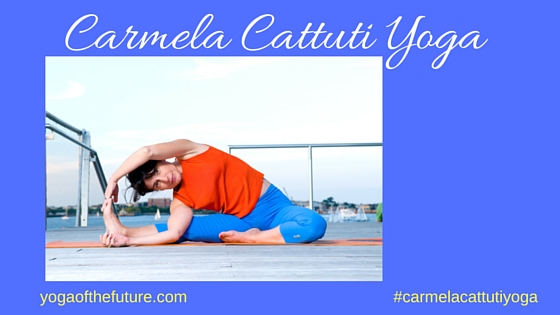The
Beginning Students Guide to Yoga
by Carmela Cattuti, Kripalu Certified
Yoga Instructor, LPN
There are so many different types of
yoga to choose from that it is extremely confusing for the beginning
student to make an informed choice. An excellent place to start is to
ask yourself why you want to make yoga part of your life. Are you
primarily looking to reduce stress or build stamina, or do you want
to increase your muscle mass and become more balanced? As in life,
there are a myriad of paths in yoga.
If you are seeking stress relief, then
you need a restorative class with a emphasis on forward bends and
twists. This class generally uses props such as blankets, belts, and
blocks to sustain the postures and has a deep relaxation at the end.
If its strength building that you want then a class focusing on
standing poses would be effective. If you would like a practice that
increases heart-rate, then a vinyasa flow sequence would accomplish
this. There is an ideal class for everyone, every body-type, and
fitness level. It is never one size fits all.
If you are older with health and joint
issues then chair yoga would be an appropriate choice. In urban areas
there is a proliferation of yoga teachers and studios. Some studios
offer a variety of specialized classes catering to different
populations with specific needs. Other studios focus on one style
like vinyasa and power yoga.
There are also schools of yoga with
studios throughout the planet where only one form is taught. These
schools usually offer beginner, intermediate, and advanced classes in
their particular discipline and philosophy. BKS Iyengar is a
well-known yoga school and has teachers and studios throughout the
U.S. This form is based on strict alignment and is an excellent segue
into a yoga practice that is grounded and safe.
It is important to make a distinction
between styles of yoga and yoga schools. Vinyasa and power yoga are
styles of yoga, meaning they tend to be trendy. These trends come and
go with what is popular in the moment. Yoga schools teach poses based
on a specific philosophy that is brought into the instruction of the
postures. It is always beneficial to try several styles and teachers
before making a decision on a practice. Your body will tell you what
class you need to meet your goals.
Once you commit to a class then your
journey begins. There are many challenges for the new practitioner
such as stiffness, aches, and weakness. These physical issues are
actually portals to vital information for the beginner. These
seemingly innocuous issues could develop into disease. It takes quite
a while for the body to develop chronic conditions, but with
awareness these possible health problems can be averted. For example,
if you notice discomfort in your hip each time you execute a certain
pose, then a trip to a chiropractor might be just the thing to
alleviate the problem.
If the beginner pays close attention
to the subtle messages conveyed by the body during practice then it
is a win win situation; the body heals and the practitioner benefits
from the healing with high energy combined with balance in body,
mind, and spirit.


